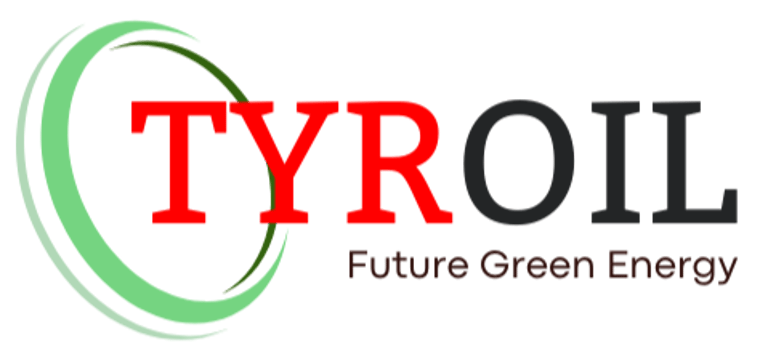The Global Mosaic: How Different Regions Tackle Waste Tires with Pyrolysis
THE STORIES
TYROIL
6/25/20255 min read


Imagine a world map, not just with countries and borders, but with vast, silent mountains of discarded tires. From the bustling metropolises of Asia to the sprawling landscapes of North America and the densely populated nations of Europe, waste tires are a universal challenge. Each region, however, faces unique circumstances – different regulations, economic realities, and environmental priorities – leading to a fascinating global mosaic of approaches to this persistent problem. At the heart of many of these solutions lies tire pyrolysis, a technology that adapts and evolves to fit the diverse needs and contexts of our interconnected world. This is a journey across continents, exploring how different regions are turning a global burden into a local opportunity, one recycled tire at a time.
A Universal Problem, Diverse Realities
The sheer volume of waste tires generated globally is staggering, estimated in the billions annually [1]. These tires, designed for durability, become an environmental headache at the end of their life. They consume vast landfill space, pose fire hazards that release toxic pollutants, and create breeding grounds for disease-carrying insects [2]. While the problem is universal, the specific challenges and available resources vary significantly from one region to another:
Population Density: Densely populated areas face acute land scarcity for landfills, pushing for more efficient recycling solutions.
Economic Development: Developing nations may lack the infrastructure and capital for advanced recycling technologies, while developed nations seek high-value recovery methods.
Regulatory Frameworks: Environmental laws and waste management policies differ widely, influencing the adoption of specific technologies.
Climate: Climatic conditions can affect the degradation of tires and the feasibility of certain recycling methods
These diverse realities necessitate tailored solutions, and tire pyrolysis, with its adaptability, often emerges as a key player.
Pyrolysis in Diverse Contexts: Regional Adaptations
Tire pyrolysis, the process of breaking down tires into oil, carbon black, and gas through heat in an oxygen-free environment, is not a one-size-fits-all solution. Its implementation varies significantly across the global mosaic:
Europe: Leading the Circular Charge
Europe has been a frontrunner in waste tire management, driven by stringent environmental regulations and a strong commitment to the circular economy. Landfill bans for tires are widespread, and Extended Producer Responsibility (EPR) schemes hold manufacturers accountable for end-of-life tires [3]. This regulatory push has fostered a robust market for tire recycling, including pyrolysis.
Focus: High-value material recovery (especially recovered carbon black, rCB) and integration into existing industrial processes. TPO is often used as a fuel in cement kilns or power plants, displacing fossil fuels.
Adaptation: European pyrolysis plants often prioritize advanced purification of rCB to meet demanding industry standards, and integrate closely with chemical and manufacturing sectors to create closed-loop systems [4].
Lessons Learned: Strong policy frameworks and financial incentives are crucial for scaling up sustainable technologies.
Asia: Addressing Scale and Growth
Asia, with its massive populations and rapid industrialization, faces immense challenges in waste management, including a significant volume of end-of-life tires. While some regions still rely on less sustainable practices, there's a growing recognition of the need for advanced recycling, with pyrolysis gaining traction.
Focus: Managing large volumes of waste, often with an emphasis on energy recovery from TPO to meet growing energy demands. There's also increasing interest in rCB for local industries [5].
Adaptation: Pyrolysis plants in Asia often focus on high-throughput systems to handle the sheer volume of tires. Collaboration between government, industry, and research institutions is key to developing localized solutions and attracting investment.
Lessons Learned: The sheer scale of the problem requires scalable and economically viable solutions, often supported by national waste management strategies.
North America: Innovation and Market-Driven Solutions
In North America, waste tire management has evolved from landfilling to a mix of shredding for civil engineering applications, tire-derived fuel (TDF), and increasingly, material recovery through pyrolysis. The market is often driven by state-level regulations and the economic viability of recovered products.
Focus: Diversification of end-uses for TPO and rCB, with a strong emphasis on market development for these products. Innovation in pyrolysis technology, including advanced reactor designs, is also prominent [6].
Adaptation: North American operations often explore partnerships with specific industries (e.g., rubber manufacturers for rCB, industrial users for TPO) to ensure consistent off-take of products. There's also a growing interest in using pyrolysis to produce specialty chemicals.
Lessons Learned: Market demand for high-quality recovered products and continuous technological innovation are vital for sustainable growth.
Lessons Learned and Best Practices: A Global Exchange
Despite their differences, the experiences of these regions offer valuable lessons and best practices that can be shared globally:
Policy is Paramount: Clear, consistent, and supportive policies (like landfill bans and EPR) are fundamental in creating a favorable environment for tire pyrolysis [7].
Economic Viability is Key: For long-term sustainability, pyrolysis projects must be economically viable, driven by the value of their recovered products and supported by incentives where necessary.
Technological Innovation: Continuous research and development are essential to improve efficiency, product quality, and environmental performance of pyrolysis processes [8].
Collaboration Across the Value Chain: Partnerships between waste generators, pyrolysis operators, and end-users of the recovered products are crucial for creating truly circular supply chains.
Public Awareness and Acceptance: Educating the public about the benefits of tire recycling and pyrolysis can foster community support and reduce NIMBY (Not In My Backyard) sentiments.
A United Front for Sustainability: The Global Future
The global mosaic of waste tire management, with its diverse approaches to pyrolysis, paints a hopeful picture. It demonstrates that while challenges are significant, innovative solutions are emerging and being adapted to various contexts. The shared goal is a future where waste tires are no longer an environmental burden but a valuable resource, contributing to a more sustainable and circular global economy.
As regions continue to learn from each other, sharing best practices and collaborating on research, the collective effort to tackle the waste tire crisis will strengthen. The story of tire pyrolysis is a testament to human ingenuity and our collective ability to transform seemingly intractable problems into opportunities for a greener, more resilient planet. It's a global effort, one recycled tire, one innovative plant, and one shared vision at a time.
More Related Articles:
The Global Footprint: How Tire Pyrolysis is Solving a Worldwide Problem, One Tire at a Time
The Green Impact: How Tire Pyrolysis Oil Benefit Our Planet
TYROIL: Fueling a Circular Economy with Waste Tires
References
[1] ResearchGate. (2017). Innovation in Pyrolysis Technology for Management of Scrap Tire: a Solution of Energy and Environment. [https://www.researchgate.net/publication/321016389_Innovation_in_Pyrolysis_Technology_for_Management_of_Scrap_Tire_a_Solution_of_Energy_and_Environment]
[2] Hashamfirooz, M., et al. (2025). A systematic review of the environmental and health effects of waste tire pyrolysis. Environmental Science and Pollution Research, 32(1), 1-15. [https://pmc.ncbi.nlm.nih.gov/articles/PMC11783015/]
[3] Afash, H., et al. (2023). Recycling of Tire Waste Using Pyrolysis: An Environmental and Economic Review. Sustainability, 15(19), 14178. [https://www.mdpi.com/2071-1050/15/19/14178]
[4] Zaki, Z. S. N. R. M., et al. (2025). Global trends of waste tire pyrolysis research. Journal of Cleaner Production, 440, 140800. [https://www.sciencedirect.com/science/article/pii/S2772783125000135]
[5] LinkedIn. (2025, May 21). Tyre Pyrolysis Plant Market Future Trends, Challenges, Key Players, and Forecast. [https://www.linkedin.com/pulse/tyre-pyrolysis-plant-market-future-trends-challenges-dygoc]
[6] LinkedIn. (2025, June 13). US Tyre Pyrolysis Plant Market: Unveiling Competitive Dynamics & Growth Opportunities. [https://www.linkedin.com/pulse/us-tyre-pyrolysis-plant-market-unveiling-competitive-dynamics-2nvwc/]
[7] Hariyani, D., et al. (2025). A Literature Review on Waste Management Treatment and Control for Circular Economy. Journal of Environmental Management, 347, 119224. [https://www.sciencedirect.com/science/article/pii/S2666188825002941]
[8] Nkosi, N., et al. (2021). Developments in waste tyre thermochemical conversion processes: gasification, pyrolysis and liquefaction. RSC Advances, 11(70), 44617-44634. [https://pmc.ncbi.nlm.nih.gov/articles/PMC8696848/]
